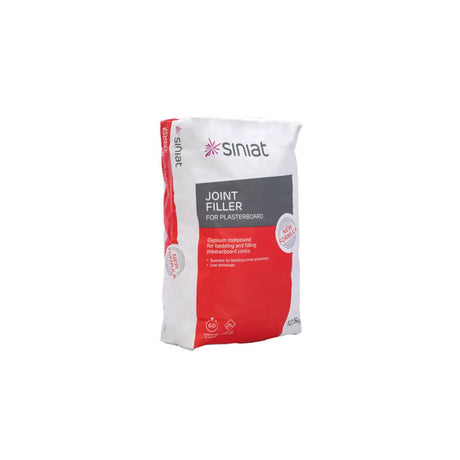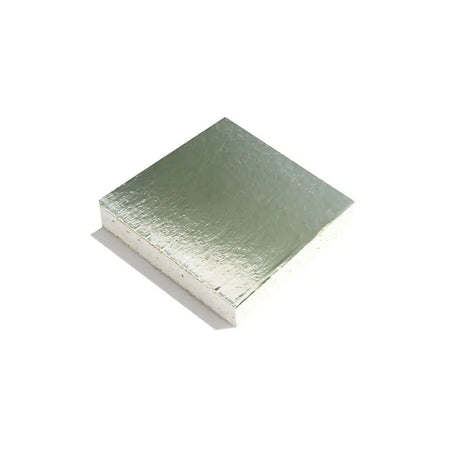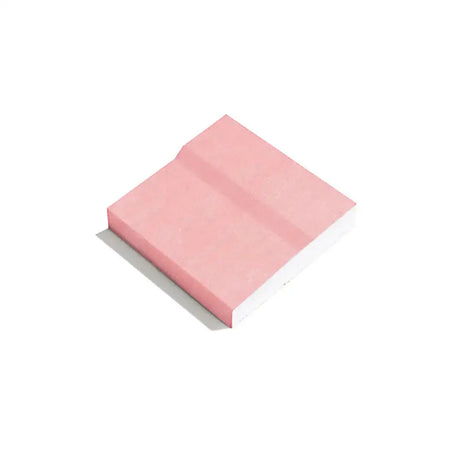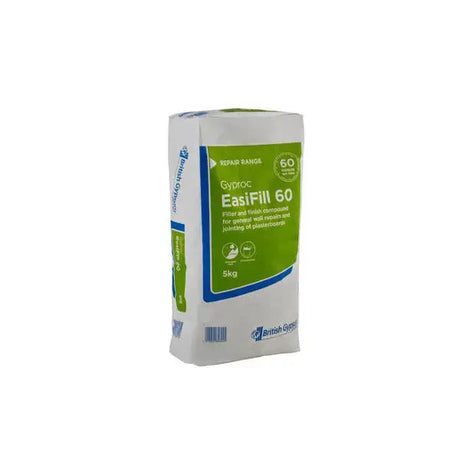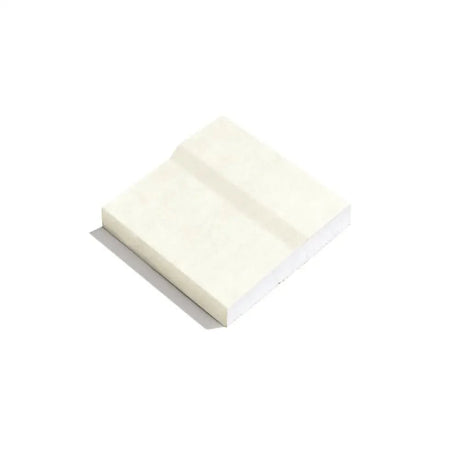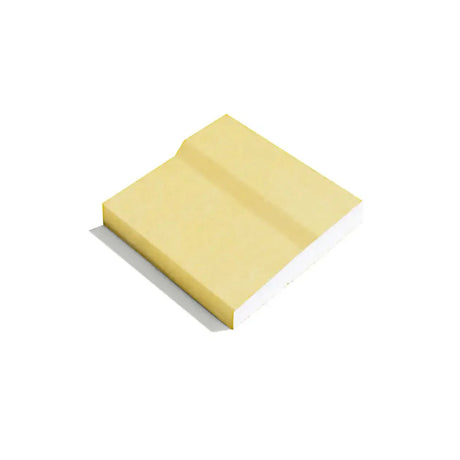Surprisingly, only 3% of homes in Great Britain are insulated. This is out of about 7.7 million houses with solid, uninsulated walls. The consequence of this is huge. It affects energy savings and comfortable living. Cheapest insulation might seem appealing but it can have hidden costs. Looking at loft insulation, pipe, or duct insulation, it's clear. Quality and efficiency versus cost should not be overlooked when maintaining a home. There's a big price range for insulation materials. For example, Aerogel costs about £100 per square meter, but glass wool is only £5. Long range costs include energy efficiency and how long it lasts. Phenolic foam has better thermal resistance than glass wool. This shows that cheaper insulation options can affect the end goal of homeowners.
Key Takeaways
- Importance of choosing quality insulation over simply budget-friendly insulation for lasting benefits.
- How cost-effective insulation involves more than upfront savings, looking to long-term energy efficiency.
- Understanding the role of proper installation in maximizing the R-value and effectiveness of insulation materials.
- Accessibility and necessity of professional installation for certain types of insulation, like structural insulated panels (SIPs).
- The complexity of the insulation market, with diverse options ranging from commonly used retrofit insulation to innovative solutions facing low demand hurdles.
- The environmental and energy implications of selecting appropriate insulation materials for different types of construction.
Understanding Insulation Efficiency and Cost-Effectiveness
When you think about insulating your home, it's crucial to understand how insulation efficiency, cost, and energy bills connect. These factors are key to saving money now and in the future. Finding the right balance between what you spend at first and the energy efficiency you get is important.
The Misconception of "Higher R-value Equals Better Performance"
The R-value measures how well insulation stops heat flow. A higher R-value means better insulation efficiency. But, how well insulation works also depends on its type, thickness, and density. Considering the settled density of loose-fill insulation and climate-specific R-values shows it's not just about the highest R-value. Good insulation should match your home's climate and structure for real energy savings.
Long-Term vs Short-Term Savings on Energy Bills
Choosing good insulation can lead to big savings on energy bills over time. This beats the short-term savings from cheaper insulation options. For example, with suitable loft insulation, you can save around £215 a year on heating. Adding things like solar water heating can save even more, up to £330 annually. These savings add up over time, showing the true value of high-quality insulation.
Quality vs Cost: The Real Impact on Energy Efficiency
Good insulation is about more than its purchase price. It's about the money you'll save and the better air quality inside your home. Materials like fiberglass and rockwool may cost more upfront but can cut your heating bills by £150 to £455 a year. So, investing in high-quality insulation makes sense in the long run. It means energy savings and less spending later on.
| Insulation Type | Estimated Annual Savings on Heating Bills |
|---|---|
| Loft Insulation (270mm) | £215 |
| Cavity Wall Insulation | £250 |
| Solid Wall Insulation | £150 - £455 |
| Energy-Efficient Boilers | Up to £315 |
| Solar Water Heating | Up to £330 |
Every insulation choice you make for your home affects both your comfort and your finances. It's essential to think about insulation's long-term benefits. This means considering not just the immediate effects but the advantages you'll enjoy for years.
Environmental Considerations of Economical Insulation
Making homes more efficient is key in reducing domestic energy use. It's a balance of costs and environmental impacts, particularly the carbon footprint of insulation materials. Understanding the long-term effects on both economy and ecology is crucial.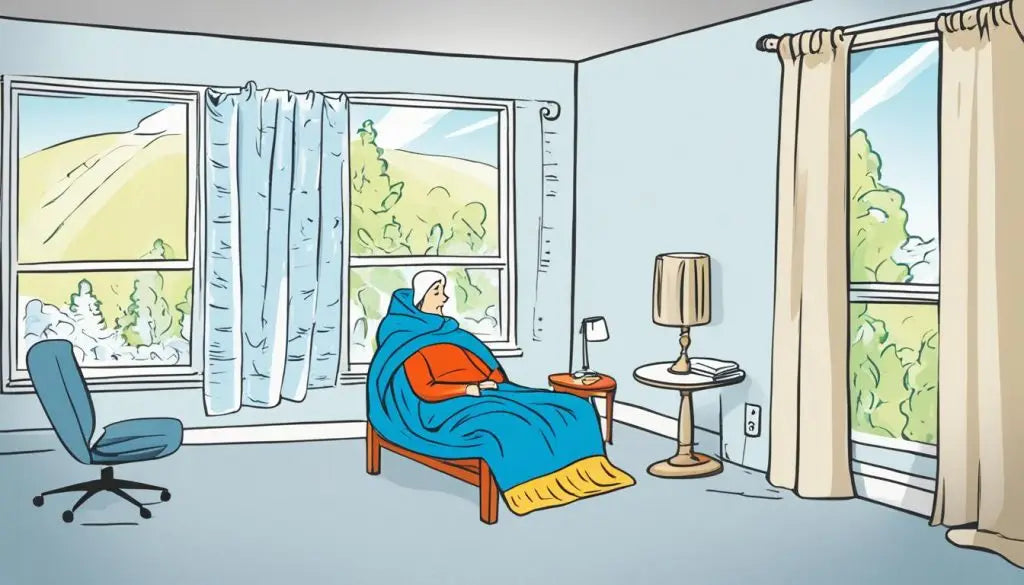
Assessing the Carbon Footprint of Insulation Materials
Choosing the right insulation materials helps minimise a property's environmental impact. A study on UK houses shows the importance of material origin and lifespan for reducing carbon emissions. Sustainable products are vital for a low carbon footprint.
The Role of Insulation in Reducing Domestic Energy Use
Insulation is key in the climate change fight. It helps save energy needed for heating or cooling. This results in fewer carbon emissions. The UK aims for homes to reach the EPC C standard by 2030. Upgrading 13 million homes at £60 billion shows huge potential. Heat pumps and good insulation could replace boilers. They're cost-effective, especially when electricity is cheaper than gas. Focus on homes in fuel poverty is essential. They must be insulated quickly. Efforts should also improve easy-to-treat properties for big energy savings. Pressure is building for better insulation in rental homes too.
Cheapest Insulation and Its Impact on Indoor Air Quality
Looking for affordable insulation often leads to missing its effects on indoor air quality. The appeal of saving money is strong for those on a budget. Yet, it's crucial to think about the health outcomes and the need for safe installation.
The Health Implications of Low-Cost Insulation Materials
Cheap insulation might not meet the best health standards. Some release harmful chemicals or fibres that harm your lungs. It's important to watch out for these health risks. Make sure any cost-saving materials are safe and don't hurt your indoor air or health.
Considering the Safe Installation and Handling of Insulation
It's key to install and handle insulation safely. Doing it right protects the installers and keeps your home's air clean. Installers must know how to fit insulation safely and manage waste without harming your living space. Here's a table of different insulation materials and their details:| Insulation Material | Thermal Conductivity Coefficient (W/mK) | Health Implications | Safe Handling |
|---|---|---|---|
| Expanded Polystyrene | 0.030-0.040 | Low risk if installed correctly | Requires caution to avoid inhalation of beads |
| Mineral Wool | 0.030-0.040 | May cause irritation | Use of PPE recommended during installation |
| Polyurethane-based Insulation | 0.020-0.030 | Low VOC emissions | Should be handled with care to prevent exposure to chemicals |
| Recycled Denim | 0.032-0.036 | Minimal chemical irritants | Eco-friendly and safe to handle |
| Foil Insulations | N/A | Non-emissive of harmful VOCs | Safe, but requires skilled installation for efficacy |
Foil insulation stands out for its energy efficiency. It offers thermal benefits and safe installation that's good for indoor air. These products are part of the trend towards green and bio-based materials. There's a move towards more sustainable insulation materials. By 2030, they might be more popular. But it's essential to choose products that are both eco-friendly and safe. As we find better ways to insulate, keeping indoor air quality high is also key.
The Differing Lifespan and Durability of Insulation Materials
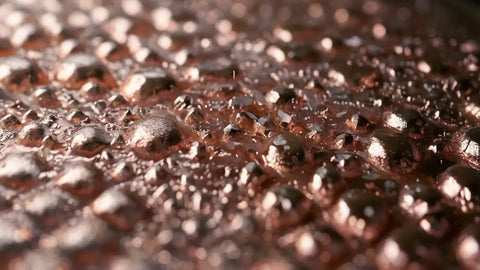
How Long-Term Durability Affects Cost Savings Over Time
Long-term durability in insulation means cost savings and more value for your property. The worth of insulation is shown by its R-value. It tells us how well it resists heat flow. For instance, polyisocyanurate insulation has a R-value between 5.6 and 7. This depends on the board's treatment. It's strong and efficient. Closed-cell foam insulation is even better, with an R-value of 5 to 8 per inch. It's top-notch at stopping heat. Think about insulating walls. High-density fiberglass batts fit well in a wall made of 2 by 4-inch studs. They give an R-15 value. This is way better than the R-11 from thinner options. So, the material keeps working well over time. This means big energy cost savings. Also, cellulose insulation has a lot of recycled stuff in it. It's made to not settle in walls. This makes it last longer and work better.Why Investing in Quality Insulation Can Mean Fewer Repairs and Replacements
Going for top-notch insulation materials like Tripolymer phenolic injection foam or AirKrete cementitious foam is smart. They're great at sealing air and stopping fires. This means not having to fix things often or replace them a lot. Also, they're good for the planet. For example, mineral wool insulation is mostly made of recycled stuff from industries. Cotton insulation has a lot of recycled cotton. This cuts down waste and offers good insulation. But, there are things to watch out for. Some foams, like XPS, might lose a bit of their R-value over time. This means they might not insulate as well. This doesn't happen with sheep's wool batts. They keep their R-values of 13 for 2 by 4-inch walls and 19 for 2 by 6-inch walls well.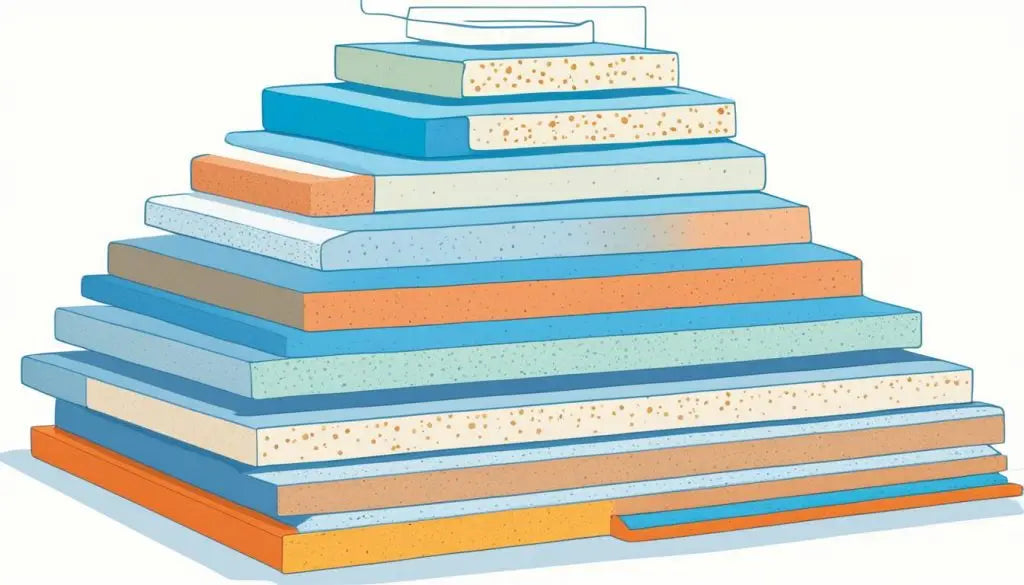 To wrap it up, picking the right insulation materials matters a lot. It meets the building's heat needs now and ensures it lasts. By choosing quality insulation, you're thinking about your property's future. You save on energy, reduce harm to the environment, and cut down on the need for repairs and replacements.
To wrap it up, picking the right insulation materials matters a lot. It meets the building's heat needs now and ensures it lasts. By choosing quality insulation, you're thinking about your property's future. You save on energy, reduce harm to the environment, and cut down on the need for repairs and replacements.
Importance of Critical Assessment Before Purchasing Cheapest Insulation Options
The real cost of insulation is not just about the upfront price. It also includes the risk of future costs from bad installation or products that don’t work well. For instance, spray foam can cost £2,500 to £4,000 to install. That's about the same cost to remove it.- A homeowner spent £4,500 fixing walls damaged after removing insulation.
- In one terrible case, the cost to remove the insulation and fix the damage was £63,000.
- The Cavity Insulation Victims' Alliance was formed because of ongoing damp problems in homes.
| Statistical Insight | Impact on Homeowners |
|---|---|
| Up to two million UK homes with insulation problems | Increased financial and health risks |
| Over 34,000 attempted claims under the CIGA scheme | Persistent challenges to receive remedial assistance |
| Cost to remove botched insulation (£3,500 - £65,000) | Considerable unexpected outlays |
| Reduced home value after insulation problems (£60,000 deficit) | Significant loss on property investment |
These worrying stats show the need for a strict process when choosing insulation. It’s better to avoid the cheapest options. Choose those known for quality and effectiveness instead.
Importance of Proper Installation for Insulation Effectiveness
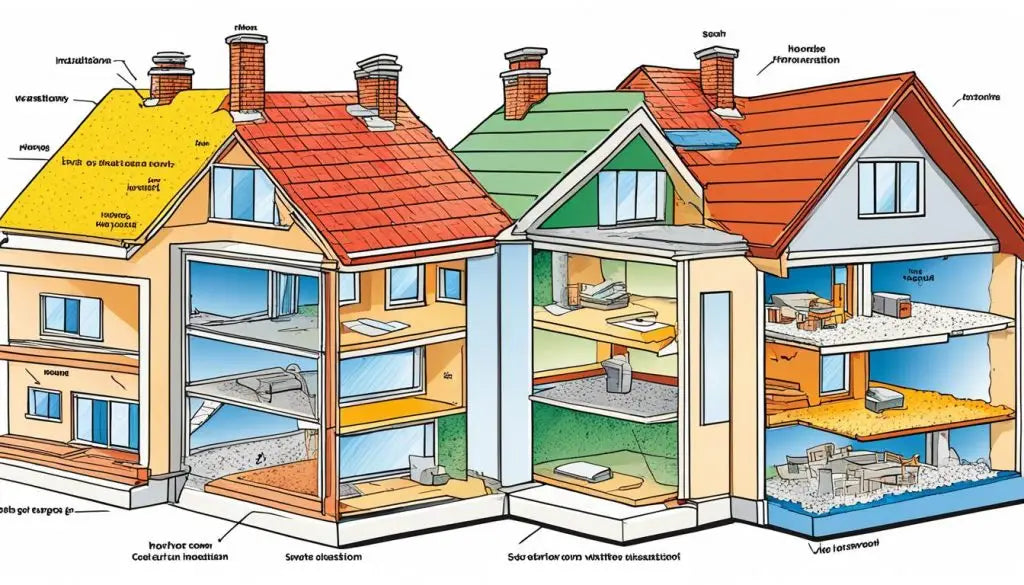 Getting insulation installed correctly is crucial for its effectiveness and for saving energy. Whether it's budget-friendly or high-end insulation, how well it performs largely depends on how skillfully it's put in. In the UK, where many homes use gas heating, proper insulation installation can lead to big savings.
Getting insulation installed correctly is crucial for its effectiveness and for saving energy. Whether it's budget-friendly or high-end insulation, how well it performs largely depends on how skillfully it's put in. In the UK, where many homes use gas heating, proper insulation installation can lead to big savings.
Why Skilled Installation Matters Even With Economical Insulation
In cold places, insulation stops heat from escaping. But, even budget insulation needs a pro for installation. It should fit perfectly, cover all the right spots, and not leave any gaps to work best. Without this careful installation, even cheaper insulation won't stop heat loss, making energy use go up.
How Incorrect Installation Can Invalidate Cost Savings
People insulate their homes to save money on energy later. But, bad installation can ruin these savings, and not cut down on gas or electricity use. Studies show that proper installation means less gas is used, especially early on. If it's not installed right, homes could lose up to half the expected saving benefits.| Material | Estimated Cost Saving (Year 1) | Importance of Skilled Installation |
|---|---|---|
| Cavity Wall Insulation | Average 7% reduction in gas consumption | Highly important to maintain reduction over time |
| Loft Insulation | 4% reduction in gas consumption initially | Crucial for sustaining performance beyond the first year |
| Internal Wall Insulation | Varies, with up to 60% of costs due to labour | Essential to prevent issues such as damp |
To sum up, thermal insulation is key for energy saving in UK homes. It needs to be installed properly to avoid high energy bills and be effective. So, while cheaper insulation might seem attractive, quality installation is what really leads to savings. This ensures a warm and eco-friendly home.
The Cheapest Insulation May Not Meet All Building Regulations
When looking for the cheapest insulation, it's easy to miss key building regulations and energy efficiency requirements. This can cause UK properties to not meet UK building standards. This could lead to additional costs through fines or the need for changes. For landlords, knowing these rules is vital to avoid big financial problems.
Compliance with UK Building Standards and Energy Efficiency Requirements
UK's energy efficiency standards are tough but important. They help cut down energy use and protect the environment. Looking for the cheapest insulation might make some ignore these rules. However, this can result in non-compliant insulation issues. Following the rules helps reduce the carbon footprint and meets The Future Homes and Buildings Standard.
How Non-Compliant Insulation Can Result in Additional Costs
Ignoring building standards in the UK can lead to extra costs. These can be direct, like fines, or indirect, like having to change non-compliant insulation. This means you lose any savings from initially choosing the cheapest insulation. So, it makes economic sense to choose compliant materials from the start.| Exemption Type | Criteria | Evidence Required | Validity Period |
|---|---|---|---|
| High Cost | Improvement cost > £3,500 | 3 installer quotations | 5 years |
| 7 Year Payback | Measure doesn't meet payback test | Cost calculations | 5 years |
| All Improvements Made | All relevant improvements but still sub-standard EPC | EPC copy, details of improvements | 5 years |
| Wall Insulation | Expert advice against wall insulation | Structural impact statement | 5 years |
"By harmonising with UK building standards, property owners safeguard their investments and contribute to a more energy-efficient, sustainable future."
Comparing the Thermal Resistance of Various Insulation Materials
When thinking about insulating your home, it's critical to know how well materials resist heat flow. This knowledge helps in keeping your house warm or cool efficiently. Some insulation types are better at blocking temperature changes than others. The less effective ones can make energy bills go up due to poor thermal resistance.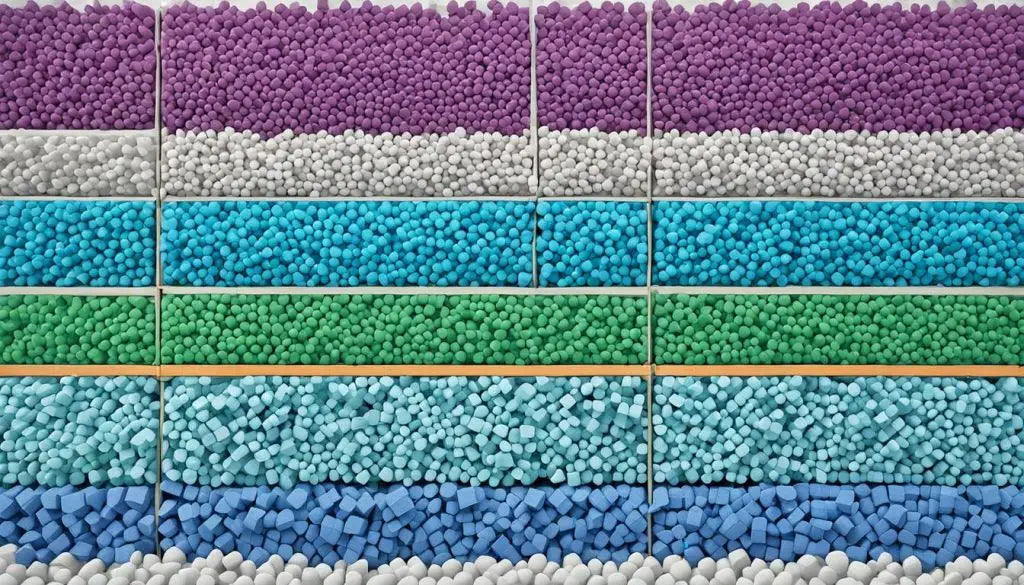
Analyzing Different Materials' Ability to Resist Heat Flow
Market-available insulation varies in heat flow resistance. Blanket insulation, for example, uses materials like fibreglass or mineral wool. Its thickness and makeup affect how well it insulates. Using concrete blocks filled with a material raises a wall's R-value, enhancing insulation. Foam boards, thin yet effective, include polystyrene and polyurethane. They’re good at insulating despite their size. Autoclaved aerated concrete is far better at keeping heat in than traditional concrete. It shows how special materials can significantly boost insulation. Insulating Concrete Forms (ICFs) are another leap forward. They mix insulation into the structure itself, which amplifies thermal resistance and energy efficiency.
Why Cheaper Insulation Might Lead to Greater Heat Loss
Opting for cheaper insulation to save money might not be the best move. While materials like cellulose fibreglass fit well into existing walls, their heat flow defence isn't the strongest. They fall short when matched with advanced materials like foam boards or spray foam, which have higher R-values. Spray foam, particularly polyisocyanurate variants, offers high R-values. This means less heat loss and reduced energy use, making them worth the extra cost. Studies show that materials with phase change material (PCM) cut down heat gain by up to 17.55%. In sunny areas, PCM windows help keep buildings cooler without much air conditioning. Though initially pricier, these high-quality materials lower energy bills in the long run. They offer greater thermal stability, which can save money over time.
Additional Costs Associated with Budget-Friendly Insulation
Budget-friendly insulation seems cheap at first, but it's important to think about long-term costs. These costs go beyond the low initial price you pay.
Understanding the Complete Expenses: Beyond the Purchase Price
To really understand what you're spending on insulation, look at all expenses together. This means adding up the cost to buy, install, and keep up the insulation over time.
Considering Installation, Maintenance, and Potential Renovation Costs
Buying cheaper insulation can end up costing more because of installation and upkeep. Also, you might need to fix or replace it sooner than expected. These are crucial points to consider when going for less expensive options.| Insulation Type | Average Cost (2000 sq ft home) | Installation Costs | Maintenance/Renovation Costs |
|---|---|---|---|
| Batt/Roll | £0.55 to £2.00 per sq ft | Varies by contractor | Low - Moderate (depends on material degradation) |
| Blown-In | £1.25 to £3.80 per sq ft | Requires specialised equipment | Moderate (may settle over time) |
| Foam Board | £1.90 to £3.75 per sq ft | Can be DIY or professional | Low (durable with minimal upkeep) |
| Spray Foam | £2.55 to £7.50 per sq ft | Higher due to equipment and skill required | Low (once set, requires little maintenance) |
| Loose-Fill | Varies widely | Specialised equipment for optimal application | Moderate (may require top-ups) |
Renovation costs can be high with cheap insulation. It might not work well and need replacing or more insulation. This increases your overall costs. Also, installation costs change a lot. You could install some types yourself, but others need professionals. This affects how much you spend in total on your home's insulation. Remember to include maintenance costs in your budget. Some insulations need regular checks or extra material to stay effective. Problems like moisture or pests affect cheaper insulation more. The true cost of budget insulation isn't just its purchase price. Installation, maintenance, and potential renovation costs all add up. So, think carefully about these before deciding.
Impact of Cheapest Insulation on Home Resale Value
Many homeowners wonder if the cheapest insulation is good enough, especially when thinking about the future value of their property. An expert valuation will consider the energy efficiency and insulation quality—key factors for resale value. Quality insulation is also a major plus for homes, meeting the demands of energy-aware buyers.
The Value of Energy Efficiency Ratings in Property Assessment
Both potential buyers and professionals look at a home's energy efficiency. Insulating a 3-bedroom house could save up to £730 on energy bills each year. It can also cut the home's carbon footprint by 1.7 tonnes. These benefits boost the property's attractiveness and value.
How Quality Insulation Can Be a Selling Point for Homes
Homes with quality insulation, like spray foam, save money on energy and offer sustainable living. This appeals to eco-friendly buyers. They also appreciate reduced noise and fewer emissions. Good insulation does more than keep heat in. It also tackles moisture and improves building safety. This makes the property more attractive and highlights a commitment to comfort and efficiency. While saving money initially seems appealing, cheap insulation may cost more over time due to repairs and lower energy savings. Investing in quality insulation raises your home's value and meets market demands for energy efficiency.
Conclusion
Choosing the cheapest insulation might seem appealing at first. However, when looking for the best balance, many factors come into play. These include insulation effectiveness, environmental effects, air quality indoors, and the material's longevity. Together, these shape the insulation's overall quality and how well it works. Insulating your home covers various areas, from attic to walls. Each requires different materials for the best energy efficiency. For example, foam sheathing and external basement insulation can prevent heat loss. These choices are crucial for keeping your home warm. This article shows that good insulation is not just a purchase; it's an investment in your home's comfort and efficiency. Look past the upfront cost to see the long-term benefits. These include fewer repairs, meeting standards, and a better house value. Choosing the right insulation makes your home more cost-effective and energy-saving.


